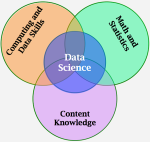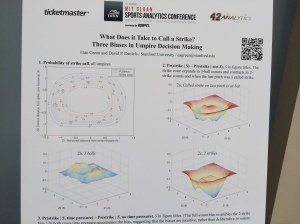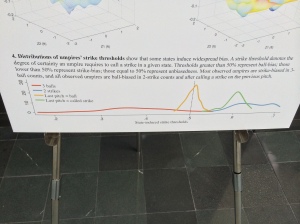This debate/ panel discussion was one of the highlights of the conference for me. Both were wickedly bright, thoughtful authors who fleshed out compelling arguments for their side. As many readers of Malcolm Gladwell know, he is known best for provoking readers to consider unconventional arguments (rather than arguing convincingly) in his books. He owned this reputation quite proudly during the conversation, as you shall read.
Learn about Malcolm Gladwell Here.
Learn about David Epstein Here.
What’s responsible for extraordinary athletics performance? 10,000 hours, or “the sports gene?” Authors Malcolm Gladwell and David Epstein debate and discuss the research around nature, nurture, and elite performance across different disciplines.
PS: this is a quick account as they were speaking. Forgive any errors or mistakes in this account.
MG: Let me try to describe David’s argument, and then he’ll describe my argument.
The Sports Gene (I liked it, read it) is making two arguments:
1. Genetic Variability: what we observe at the elite level is the spectacle of human variability in action. Elites are almost invariably genetically different than the norm.
2. A structural understanding of athletic excellence: You situate E african running prowess in context of their geography and wnthropoloy as well as their genetics to understand their dominance.
I believe that these arguments are interesting to explore, and their popularity illustrate how our standard descriptions or excellence are wanting. We are typically thinking on the nurtre, not the nature side, which is why the book was compelling.
DE: What MG has said in Outliers differs than the public perception. The prevailing (and inaccurate) idea: 10,000 hrs is both necessary and sufficient to gain elite skill. That’s not MG; the “rule” is a principle. Once pre-screened, after that level, practice is the difference. The threshold hypothesis: above a certain threshold, stable abilities/ talent no longer distinguish people to the same extent as practice does. Your version of this is the 10,000 hour hypothesis.
MG: Here’s what’s confusing: the idea came originally from a paper by Simon/Chasen – the chess context. What distinguishes an elite player? Because of an extraordinarily large # scenarios seen, they can “chunk” things in larger pieces. Gretzky can make huge chunks because he had processed so much in the past. You have to play for a large amount of time before you can do this. They guess at least 10,000 hours of exposure. Anders Ericsson dispenses the idea of “threshold,” and expands/ stretches it: it’s all practice.
DE: But the chess players ranged from 14K to 50K hours: 10,000 was an average of individual differences. What is the degree of variability among elite players?
MG: We can quibble about this threshold number, but … do we really care about chess?
DE; I argue that focusing on super-elites is a bad place to start. Such a restriction of the data to an extreme degree. If you study basketball skill and restrict your dependent variable to just hyper-elite basketball skill, you can get a negative correlation between basketball skills and height! Bizarre results emerge with such restriction. If you extrapolate back to childhood, many of the best players practiced less in the early years!
MG: Let’s step back: Ericsson says that deliberate practice can reach the elite level with enough time. The middle ground is what, I think, I occupy: some baseline of talent is required, and practice. We can move the bar over: Where is the optimal practice/talent division? Maybe Eric is right for some activities. For example, start will college graduates: perhaps the overwhelming majority could be better than average cardiac surgeons with sufficient commitment and practice. I don’t think there’s a magical talent in that field.
DE: Ok, but what’s the proof of that? What’s the evidence? If you look at doctorates in general… Looking at mathematically precocious youth, the top quartile of the top 1% at age 13 have grown up to have many more doctorates than the rest of the top 1%.
MG: I would say that there are a series of relatively complex psychomotor tasks that nearly all of us can do successfully. Driving, for example. We operate that ALL can learn to drive safely, Society doesn’t even ask: we have enormous confidence of some tasks by simply being motivated and putting in the time. Is cardiac surgery that much harder than driving? Not really. There are restrictions and rules, but if you can drive a car, then you can probably become a cardiac surgeon. I give a charitable defense of Ericsson: the realm of conquerable challenges is larger than we think.
DE A good point, however, Ericsson goes MUCH further. He’s a bit extreme. Ackerman: the more open a task (unlimited the moves), the greater the differences become with training. Is cardiac surgery open/ closed?
MG: I’d argue it’s closed. Then add to that another variable: motivation. Our definition of “motivation” is interesting. Is motivation to practice hard-wired, or something entirely environmental? I read that as a 3 year old, Wayne Gretzky would be transfixed at a game, then burst into tears when the game was over. The game was so satisfying on a deep emotional level and fit his imagination so deeply, I surmise that it must be innate in some way – Gretzky has a weird “fit” of his imagination with hockey: Like classical music fits a composer’s imagination: Do we have an incomplete understanding of motivation?
DE: Very possibly. I’m interviewing a 55 year old triathlete: She cannot sit still. Literally. She must be moving.
MG: Suppose you put a group of people with a mild genetic predisposition to run quickly, and put them in Jamaica: the motivation to run is intense: more so than whatever genetic traits can predict, I think.
DE: Prodigies in math, art, etc… They have associated abilities outside their world – other things determine where they go in their field. Clearly an interaction effect.
MG: The classic study on mathematically precious youth: you start with roughly equal numbers of males and females, and females drop out. Here’s a thought: maybe the boys define what they like at what they are good at, but girls don’t think that way. They like what they like, but being good is not the key thing. A benign explanation for long term differences, but an intriguing one: A fascinating interaction / environmental nullification of an environmental trait. One may cancel out excellence for relatively mundane organizing principles.
DE: A question: What is your description of the 10,000 hour rule?
MG: You never know what people will be drawn to. … I had no clue that the 10,000 hour rule would catch on: I was trying to make appoint about social support. The thesis of outliers (and the 10,000 hour rule)? success in a group project. Once you get that elite success takes a LOT of support and work, the idea is obvious. You get the idea why there are no poor grandmasters. You can’t do it without a lot of social support. Bill Joy, the extraordinary programmer, told me that the list of things to become an elite programmer was huge. So I don’t know how you put in the 10,000 hours without tremendous social support.
DE: I give you a hard time, because you gave me a hard time about similar inconsistencies.
MG: Am I inconsistent? absolutely! I love to take an observation and call it a law! It gets attention! Consider “the exception that proves the rule.” It’s just a fabulous cop-out. A cover your ass way to justify all logical inconsistencies in one’s thinking… what’s not to love?
DE: Your idea that these things take more practice than people think…sure. But what are you really saying other than “After screening, practice helps?” That’s the most watered-down version of your argument: what more are you arguing?
MG I’d add: Absent practicing, at some level you will guarantee that you don’t progress. Classical music is a great example: Of the top 75 pieces, only three were composed by a person with no less than 10,000 hours of work. Excellence cannot happen without putting in the time. In a day where we celebrate flashes in the pan, it’s a huge point to say. One problem: elite people systematically underestimate the amount they practice. Self-reported work time is notoriously biased in underestimating Chris Chadaway – one of the great English runners: Still maintained that he never trained.
DE: I asked him about the lack of measurements of variance in Ericsson’s 10,000 study: What was the variance? He said, reporters weren’t good at estimating. But he never included a measure of variability. To your composer point: let’s talk about Mozart. It seems that composers always test high on working memory.
MG: Mozart’s early compositions were not good – he started getting good after 10-11 years of composing. The path towards genius, when steep, but the product of the prodigy is not on par with those of the mature practitioner. Let’s talk about thresholds. I had in my book: The idea of the “flat maximum” in psychometrics. At the top of the distribution, the value of the metric begins to lose value. IQ is hugely predictive around the mean, (95 – 105 matters) , but at the edges knowing the difference between 140 or 175 is not predictive. The interesting predictor is their effort level. Especially b/c creativity diverges greatly from intelligence at the high IQ ends. So the admission standards at the elite level are BULLSHIT. The great suggestion: the only fair way is to have a general cutoff and then a lottery.
DE: I don’t think it’s a true flat maximum: there’s a ceiling I think it looks like it curves UP at the ends , but there are no tests for them. I think the chances of getting tenure in science and math is predicted.
MG: Those studies double count. Good at SAT is the same as “finishing doctorate” skills. The 690 kid at age 13 is demonstrating an abnormally high level of self-discipline and an abnormal affinity with measure of intelligence. I don’t like that. Is their work any good? How about “number of citations on papers?”
DE: Right now, two very long longitudinal studies would disagree. When you restrict the range of any sample, you would lose predictive power.
MG You miss the point: It’s not just people bumping up against the “cap.” It measures only one of many traits that you need for elite excellence. When you see divergence between creativity and other measures of cognitive ability at the top, that should give you pause – are you measuring what you care about? Jensen: at IQ=100 sure it works, but to find groundbreaking work at the elite level, we are interested in so many traits. Why are we in love with IQ or SAT as a proxy?
DE: Yeah… Let’s talk about sports, though OK? At some point you are standardizing both the traits and the
MG: The NFL combine: for 95% of the things they want to do, a 40YD dash time at the 40th percentile is probably fine. Then you can systematically apply that to all sorts of thresholds: the “don’t care” line where further achievement is meaningless.
DE: Big data flooding into sports. The combine sucks because the measures aren’t things you do in football.
MG: The fix for the combine is the same for college admisions.
Q: Can teams use anthropological traits to find, perhaps breed players?
DE: WE know a ton about body traits that work in sports. wingspan vs height ratio in NBA – 1.05/1 in NBA, but 1/1 in general pop. Most NBA would qualify for Marfan syndrome. Sports science is buzzing about the big bang of body types. Now we know what types work for each sport. Will teams genetically test? No test for physiology, not genes: It’s probably better to assess the skills directly. Maybe those predisposed for concussions or heart failure?
MG: Andre Agassi and Steffi Graf’s kids in Vegas: there’s an experiment in genetics to see what happens?
Q: Does the 10,000 rule explain the number of siblings in sports (the Mannings) ?
MG: I don’t think it extends to sports easily. One exception: playing QB . The chunking arguments of chess apply to quarterbacking, I think. I would be intrigued to study that idea. Also maybe golf: If you have siblings who play non-stop, absolutely. Especialy if you are competitive with an engaged parent. As the cognitive complexity of certain sports increase, then I think the value of atypical support increases as well.
DE: As it’s more complex, the more hours you need to put in.
Q: What about in random environments with unclear outcomes?
DE: One of the revolutions in exercise genetics: I may need 3 tylenols, another needs 1. What’s the optimal exercise for that athlete?
MG: Wouldn’t that be great to do at the NFL combine: the susceptibility to training? How you respond to the kinds of efforts teams need in the next few years? It’s what we get at when we talk about “upside:” someone trying to understand an athlete’s sensitivity to future training. Or is there already a threshold?
DE: I think there’s not a baseline.
Q: Can motivation be learned, or is it innate?
MG: Psychologists would sat that notation is most environmentally determined. You see clusters of excellence in surprising area – Dominican shortstops, Dutch speed skaters, Social values impact to motivation, I think are enormous: The degrees that certain ethnicities are overrepresented in medical fields . Overrepresentation by 5x , 6x: Cultural expectations/
DE: I find training groups to be incredibly motivating.
Q: Can talent drop off due to fragmentation of student time?
DE: I don’t think do: chess prodigies are happening earlier and earlier. I don’t think there’s fragmentation, but rather a trend toward hyper specialization, and many people think that it’s not the best way for kids to succeed. More typical: Rodger Federer, who dabbled. Some evidence that the elites were not practicing one skill a lot, because the truly elite are “sampling” what fits their personal self the best- they have a choice.
MG: We both ran competitively : success at age 13 is not a great predictor of success at age 21. Burnout. The idea of burnout: have we underestimated this as a consequence of hyper specialization.
DE: For Girls who are early talents in tennis, a major burnout rate.
MG: The trend towards hyper specialization has a perverse end: To develop an elite corps you want huge pool of potential. What happens with hyper is that you diminish the pool at the outset. You direct your kids out of such things. Shouldn’t we expect out achievement to worsen with this trend? Would it make sense to ban certain kinds of national level sports below a certain age?
DE: One nationally ranked tennis/ hockey girl thinks you should ban major travel times. The more you ban access, the lower the talent you get. The model is to keep decent kids in – do disadvantage them so much to
MG: The Canadians fixed this: Just focus all of your attention on one sport!










